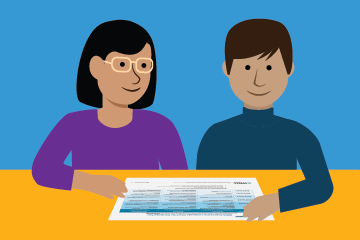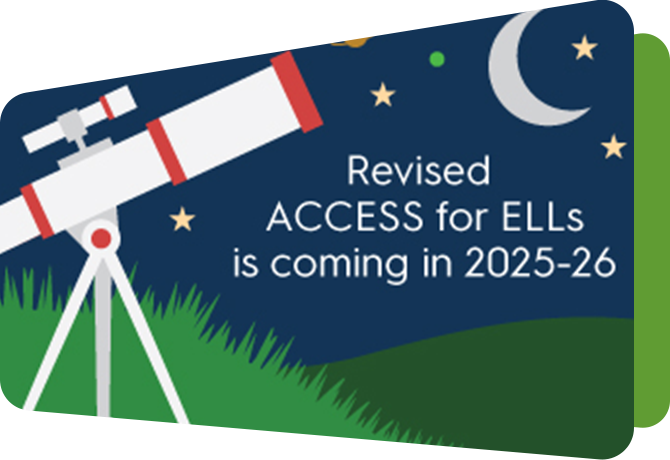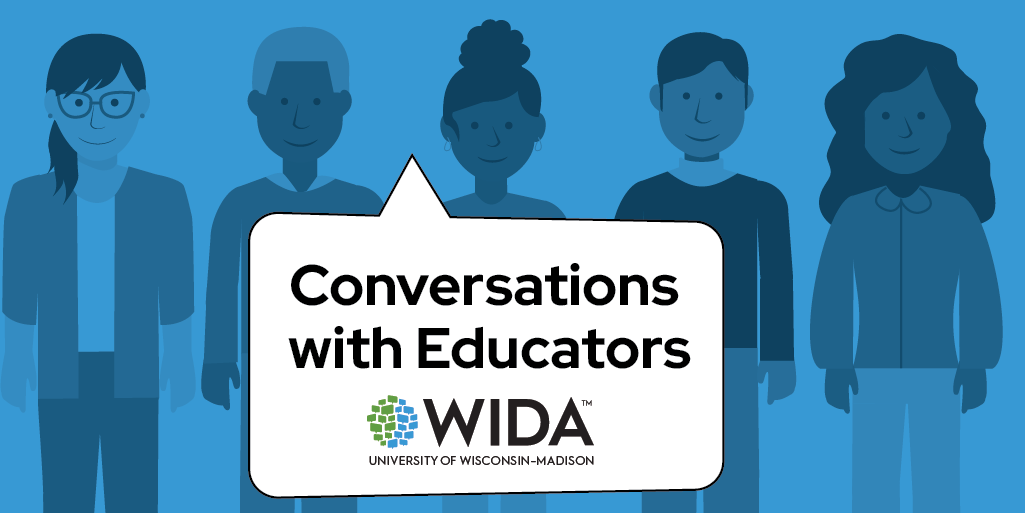How to use our new language charts right now

By Hannah Haynes
The WIDA Language Charts are a brand-new resource that can help educators understand and communicate the expectations of the revised ACCESS for ELLs assessment (WIDA ACCESS), which everyone will use in the 2025-2026 WIDA testing year.
These charts are a significant step in connecting WIDA assessments to the WIDA English Language Development Standards Framework, 2020 Edition. The new charts make the Proficiency Level Descriptors (PLDs) clearer, more actionable and directly connected to classroom instruction.
The Purpose and Development
The Language Charts were developed as part of the WIDA Assessment Team’s work to ensure that assessment tools provide meaningful connections between testing experiences and classroom instruction. The development process for the Language Charts was extensive, incorporating feedback from 108 educators across seven focus groups held between Fall 2023 and Fall 2024. Educators from various roles—including ESL/ESOL teachers, instructional coaches, district administrators and content teachers—contributed insights to ensure the charts were practical and effective in real classroom settings.
Some key areas of focus in development were as follows:
- Ensuring alignment with the 2020 PLDs
- Streamlining the PLDs for clarity and usability
- Addressing digital design options
- Testing usability in an array of classroom environments
Educators emphasized the importance of making the charts both rigorous and user-friendly, allowing teachers to interpret ACCESS scores, plan instruction and communicate student progress.
New and Improved
The new Language Charts are a resource for all educators, even those without specialized language backgrounds. They expand from one K-12 continuum to six grade-level cluster continua, aligning with WIDA ACCESS. They include the following:
- Two communication modes: Interpretive and Expressive
- Six language proficiency levels
- Three dimensions of language: Discourse, Sentence, Word/Phrase
The charts are available in two formats, including printable PDFs and customizable spreadsheets, to cater to different educator preferences and learning styles.
You’ll find planning questions below the descriptor tables. These will help bolster connections between assessment and instruction in the classroom. As you gather data on what students can do with language, you can jot down notes for these questions:
- What can the student do with language?
- How can I connect to the student’s social, cultural, and multilingual strengths and interests?
- What concrete feedback will move the student forward?
- What scaffolding and modalities will increase the student’s engagement?
Expressive and Interpretive Language Charts
In the Language Charts, the four individual language domains—listening, reading, speaking, and writing—are consolidated into two modes of communication: interpretive and expressive. The interpretive mode encompasses listening, reading, and viewing, while the expressive mode includes speaking, writing, and representing.
In the Interpretive Language Charts, the discourse dimension descriptors focus attention on students' abilities to navigate increasing density of language, as well as its overall organization and cohesion. The sentence dimension reflects the extent to which students comprehend meaning in a variety of sentence types, while the word/phrase dimension highlights students' understanding of the range of language used to convey content-based concepts and ideas.
In the Expressive Language Charts, the discourse dimension descriptors call attention to cohesion of students' language use, as well as its organization and density. The sentence dimension illustrates how students convey content-based meaning through different sentence types, while the word/phrase dimension refers to the precision of their communication.
By highlighting three distinct dimensions of language, the charts support the assessment of student language proficiency in expressive and interpretive language use at the end of each unit of instruction.
Get Started Now
Start using the WIDA Language Charts today! Use the charts in the following ways:
- To get familiar with the revised expectations of WIDA ACCESS and WIDA ACCESS for Kindergarten
- To collaborate with content area colleagues
- To plan curriculum, instruction and classroom assessment
- To trace student growth in language development over time
Note: Beginning with WIDA ACCESS scores in 2026-2027, you can also use the language charts to interpret and communicate about ACCESS scores. We’ll give you more information on that when the time comes.
Find the charts, informational PowerPoint slides, a facilitator toolkit and more information at the bottom of the Revising ACCESS webpage.




